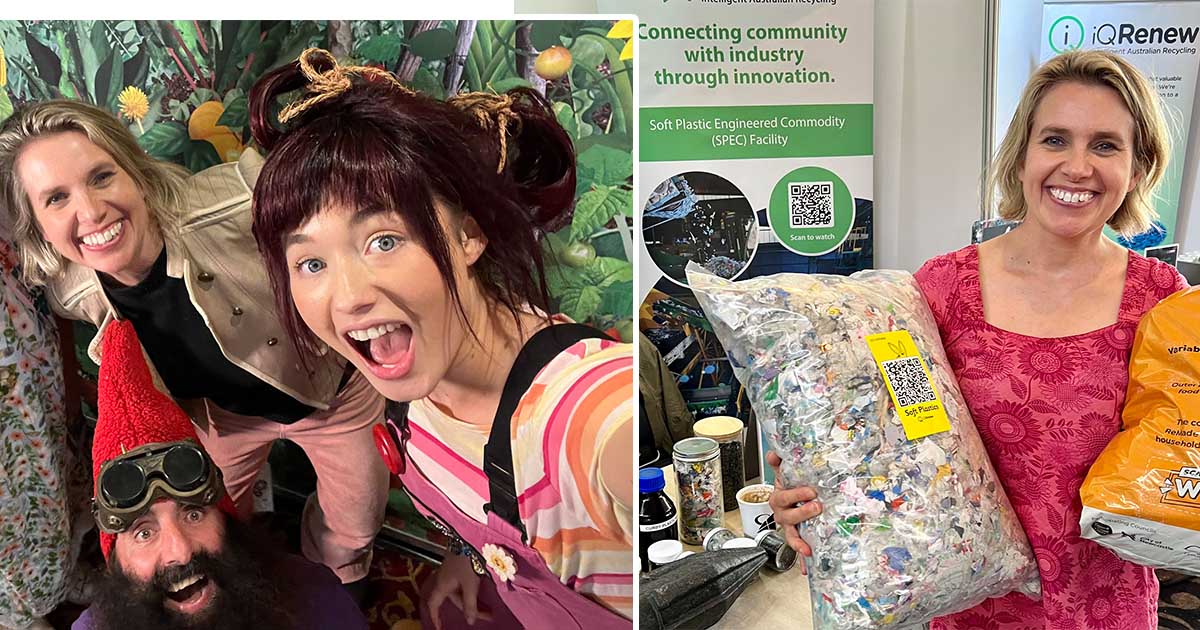Waste and Recycling in The Hills
BY CLR DR MILA KASBY - Greens Councillor for The Hills Shire Council
When I was at school, “Do the right thing!” meant put your rubbish in the bin without littering. We’ve come a long way from that mindset now, realising that ‘out of sight’ (at the tip) is not the best solution given that resources are finite, and our ‘waste’ has value.
I love going to the waste industry conference in May – not only because one of my favourite people, Costa from Gardening Australia (along with Dirt Girl and Scrapboy) are among the key presenters but because it’s inspiring to see the seismic shift in thinking that is happening in this space.
One day, hopefully we won’t have any waste – the aim is to ‘design it out’ and this is key to what is called the circular economy. This is a system where products and materials are kept in circulation through processes like reuse, repurposing, recycling and composting.
NSW is moving to a circular economy over the next 20 years and this means we’ll be using our resources much more efficiently – ending up with less waste, lower emissions, less harm to our environment and more jobs.
You can’t see it but councils are now starting to use more recycled content in everyday infrastructure, driving demand for these products and stimulating new markets.
 Rubber crumb from thousands of tonnes of truck and car tyres are now being used in asphalt to build roads instead of going to the tip – with the rubber even improving the performance and durability of the road.
Rubber crumb from thousands of tonnes of truck and car tyres are now being used in asphalt to build roads instead of going to the tip – with the rubber even improving the performance and durability of the road.
Footpaths and paved areas can now contain crushed glass and printer cartridge toner and recycled plastics are being used to create resilient bridges, playgrounds, outdoor furniture and decking.
Our council is constructing 2 pedestrian bridges in Cockayne Reserve, Castle Hill made from recycled plastic (Fibre-Reinforced Polymer) a material that is more durable, corrosion resistant, strong and affordable – and a very impressive reuse of our waste.
FOGO (food organics and garden organics) is a part of this circular economy thinking – all of our food scraps will be collected from 2027 and turned into valuable compost to feed the soils in our gardens, local parks and sports fields.
Clothing is a huge challenge but the Sebastian Foundation has come up with a beautiful circular economy example. Through their partnership with E-Thread they repurpose and recycle all textiles donated to their bins (none goes to landfill) and use the proceeds to fund an enriching youth mental health program in schools within that community. It would be fabulous to see this in the Hills!
Of course recycling is only part of the solution, we also need to address the generation of waste at the source. Australia needs packaging reform, not just voluntary guidelines – manufacturers should be responsible for the waste their products create. They can’t keep churning out products that are not recyclable or difficult to recycle and they need to financially support the recovery of these materials.
I’m pleased that the council supported my motion on June 25th to minimise waste to landfill, encourage the use of materials with recycled content and ask the government to urgently act on waste generation at the source




